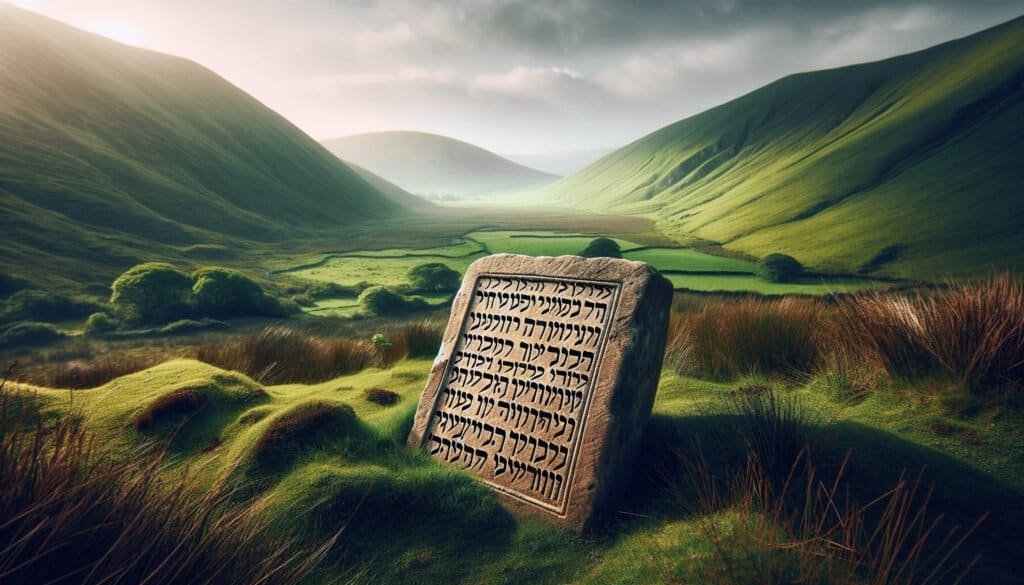What fascinates you more: the remarkable resilience of ancient cultures or the intricate web of familial connections that shape their histories? When we think of ancient Israel, we often marvel at its history, yet the stories and genealogies found within this rich tapestry can reveal even deeper insights into its people and their connections.
What Are the Hill-Country Tablets?
The Hill-Country Tablets are a fascinating collection of ancient inscriptions that have emerged from archaeological sites in what is now modern-day Israel. These tablets, dating back to the Iron Age, often contain genealogical lists—a sort of ancient family tree—that offer a unique glimpse into the social structures of the time. They’re like having a conversation with ancestors who lived thousands of years ago, revealing connections and relationships that formed the bedrock of their communities.
Where Were They Discovered?
Most of these tablets were unearthed in the highlands of ancient Judea, in what is known as the Judean hill country. These remote areas have always spurred a sense of intrigue, often overshadowed by the more significant archaeological finds located in cities like Jerusalem and Jericho. However, this mountainous region was a crux of cultural and social activity, making it no surprise that significant finds like the Hill-Country Tablets came from there.
Why Are They Significant?
You might wonder, why should we care about these ancient genealogies? The significance of the Hill-Country Tablets extends beyond mere curiosity; they are crucial for understanding the history and lineage of the people of ancient Israel. These inscriptions not only outline familial relationships but also provide insights into societal norms and rituals.
Linking Historical Texts and Family Trees
The genealogies found within the tablets can often be correlated with biblical texts, revealing connections that may have otherwise gone unnoticed. Though scholars and historians have debated these relationships for decades, the tablets offer a tangible link between written history and archaeological findings. For a modern reader, this means that the stories you’ve heard or read in sacred texts might hold even more truth than you imagined.

The Cultural Context of the Time
The cultures of ancient Israel were deeply intertwined, often sharing traditions, religious practices, and even familial ties. Understanding the position of the Hill-Country Tablets requires diving into the broader cultural context of ancient Israel and neighboring regions.
The Role of Genealogies in Ancient Cultures
In ancient societies, genealogies played a vital role in establishing identity and social standing. You could say they were the “LinkedIn” of their day, outlining not just who you were related to, but also indicating your tribe, land, and status within that community. This was particularly essential for the Israelites, where lineage could dictate everything from property rights to leadership roles.
Interactions with Neighboring Cultures
The Israelites were not alone in their beliefs and practices. They interacted with various neighboring cultures, such as the Phoenicians, Moabites, and Edomites. The way these cultures borrowed from one another—in language, customs, and yes, genealogical practices—adds another layer to our understanding of ancient Israel, revealing how interconnected human societies have always been.
Key Archaeological Discoveries
As you reflect on the Hill-Country Tablets, it’s essential to consider some of the crucial archaeological discoveries that have brought these texts to light.
The Tel Zayit Stone
One such significant artifact is the Tel Zayit Stone, discovered in 2005. This stone, inscribed with an early form of the Hebrew alphabet, provides substantial evidence of literacy in ancient Israel long before what was traditionally assumed. It reinforces the idea that people in this region were documenting their histories and genealogies more extensively than previously understood.
The Aghion Seal
Another intriguing find is the Aghion Seal, which dates back to the same period as the Hill-Country Tablets. This seal bears an inscription that links a prominent family to the historical context of the tablets, bolstering the narrative of family connections that the tablets propose. It suggests that maintaining a record of lineage and connections was a widespread practice and held importance across various strata of society.

Analyzing Specific Tablets
The beauty of the Hill-Country Tablets lies not just in their existence but in the intricate information contained within them. Let’s take a closer look at some notable examples.
The Tablet from Khirbet Qeiyafa
This tablet has gained significant attention within the academic community. It lists a series of names that connect to families supposedly linked to significant biblical figures, as well as offering a glimpse into the social hierarchies. The implications are substantial; they hint at an organized society with roles and responsibilities outlined across generations.
The Tablet from Nahal Hever
The Nahal Hever tablet carries a poignant reminder of the community’s lineage. It records familial relations but also addresses property ownership and responsibilities. This context hints at the transactional nature of ancient relationships, where ties could represent obligations as well as connections.
The Theological Implications
You might find it interesting how genealogies don’t just hold historical value; they also carry significant theological implications for many believers today.
The Importance of Family Lineage in Scripture
In the biblical text, genealogies often serve as a means of establishing legitimacy and fulfillment of prophecies. For instance, the genealogies found in the Gospel of Matthew and the Old Testament establish Jesus of Nazareth’s lineage as a descendant of King David, which is central to his messianic claims. The Hill-Country Tablets can serve as a complementary source for examining these claims, providing additional context and validation.
Genealogies Mirror Spiritual Narratives
Moreover, genealogies often reflect a broader spiritual narrative about divine purpose and the unfolding of God’s plan through generations. Each name inscribed on these tablets carries weight, representing not just individuals but their personal stories and struggles, mirroring the complexities of faith among humanity.
Modern Relevance of Ancient Genealogies
As you consider the Hill-Country Tablets, think about their implications for today. The fascination with genealogy has reached unprecedented levels in modern times, with services like Ancestry.com and 23andMe becoming staples in tracking personal histories.
The Ongoing Search for Identity
Today, many are on a quest to trace their own roots, often providing a sense of belonging or purpose. The Hill-Country Tablets remind us that this pursuit of understanding our family trees is not a new phenomenon; it has historical precedent and deep cultural significance.
Ethical Considerations in Genealogical Research
However, as you embark on your genealogical research—whether for family history or academic pursuits—it’s essential to consider the ethical dimensions. What do these connections reveal about privilege, heritage, or even past injustices? Engaging with these questions can enrich your understanding and appreciation of the past while guiding you in how you approach your magical journey of discovery.
The Intersection of Technology and Ancient Genealogies
Technological advancements have transformed how we understand and interact with genealogical data, bridging the gap between ancient civilizations and our modern world.
New Technologies in Archaeology
Modern scanning and imaging technologies have allowed researchers to examine artifacts like the Hill-Country Tablets in greater detail than ever before. Non-invasive techniques can reveal inscriptions that might not be visible to the naked eye, facilitating new discoveries about ancient cultures and their connections.
Crowdsourcing Expertise
Furthermore, a new wave of crowdsourcing research has emerged, engaging enthusiasts and experts alike in piecing together ancient records. Collaborative platforms enable diverse individuals to contribute their knowledge and insights, thus democratizing the field of biblical archaeology.
Conclusion: Connecting Ancient and Modern Worlds
As you reflect upon the Hill-Country Tablets and their genealogies, consider the profound narrative they convey. They serve as bridges between the past and the present, reminding us of the enduring nature of human connections and the relentless search for identity.
The stories captured within these carvings not only enrich our understanding of ancient Israel but also resonate with our modern experiences. By examining these artifacts, you open a window to the complexities of human relationships that have transcended time and cultural boundaries.
Ultimately, engaging with the Hill-Country Tablets and their genealogies connects you to the rich tapestry of heritage, spirituality, and societal structures that persist in shaping our world today. They inform our understanding of not just who we are, but where we come from, intertwining our histories with those of our ancestors. So, as you mine the depths of these ancient genealogies, know that you are part of a legacy that echoes through time.



